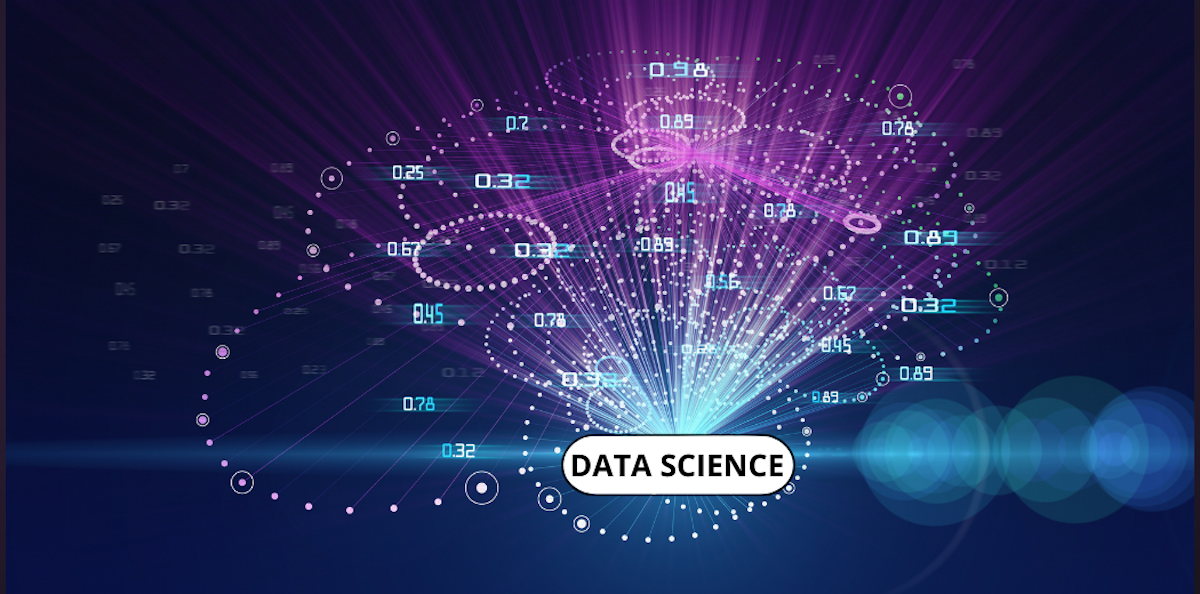An in-depth exploration of cryptographic data science as applied to blockchain ecosystems, examining the technical foundations, analytical methodologies, and practical use cases that enable data scientists to interpret, model, and optimize decentralized networks. Aimed at professionals with a technical background, the piece highlights how data-driven approaches enhance security, transparency, and performance across blockchain applications

In the dynamic and rapidly expanding domain of blockchain technology and cryptocurrencies, cryptographic data science has become a cornerstone discipline. As blockchain networks continue to scale in complexity, volume, and utility, the demand for robust data science methodologies capable of decoding the intricacies of decentralized systems has intensified. Blockchain, by design, is an immutable and decentralized ledger system that records all transactions in a time-stamped and cryptographically secured manner. This infrastructure generates extensive, semi-structured data sets that, while publicly accessible, are often challenging to interpret without a comprehensive understanding of the underlying cryptographic and consensus mechanisms.
Cryptographic data scientists operate at the intersection of blockchain technology, data engineering, statistical modeling, and machine learning. Their role involves systematically extracting, cleaning, modeling, and interpreting blockchain data to provide actionable insights. These professionals not only facilitate a deeper understanding of the transactional layer of blockchains but also play a critical role in identifying systemic risks, quantifying network health, optimizing protocol incentives, and enhancing the security and transparency of blockchain ecosystems.
Understanding Blockchain Data Structures and Characteristics
Blockchain data differs fundamentally from conventional data sources. Each blockchain is a distributed append-only database in which each block contains a batch of transactions, a timestamp, and a cryptographic hash that links it to the previous block. This architecture ensures that any alteration of the ledger would require an infeasible amount of computational power to propagate fraudulent changes across a majority of the network nodes. In addition to transaction-level data, blockchains store metadata such as gas usage, block size, smart contract execution outcomes, validator activity, and consensus metadata.
The decentralized and pseudonymous nature of blockchain systems introduces analytical challenges. Unlike traditional databases where data is organized in tables with clear relational mappings, blockchain data is scattered across nodes, requires decoding of binary and hexadecimal formats, and lacks straightforward user identity associations. Furthermore, the emergence of multi-chain ecosystems, where assets and operations span across different blockchains (e.g., Ethereum, Solana, BNB Chain, Polkadot), necessitates cross-chain data normalization and interoperability strategies.
The Analytical Role of Cryptographic Data Science
Data science in the blockchain context encompasses a comprehensive set of practices aimed at extracting insight from vast and dynamic on-chain datasets. Among its primary applications is the detection of anomalous transaction patterns that may indicate illicit behaviors such as money laundering, market manipulation, or unauthorized access to smart contracts. By deploying clustering algorithms, anomaly detection models, and graph-based heuristics, analysts can identify entities of interest and flag suspicious activities.
Another critical area is smart contract auditing. Given that smart contracts are self-executing code deployed on-chain, they are susceptible to logical flaws and attack vectors that can result in substantial financial losses. Cryptographic data science enables the development of tools that monitor smart contract behavior in real time, simulate execution scenarios, and detect state anomalies that deviate from expected patterns. These insights are indispensable for DeFi platforms, NFT marketplaces, and DAO governance mechanisms that rely heavily on automated contract interactions.
Network performance and scalability analytics are also key functions of blockchain data science. By modeling metrics such as throughput, latency, transaction finality, and gas efficiency, analysts inform the design of protocol upgrades and layer-2 scaling solutions. Techniques such as sharding, rollups, and zk-SNARKs are often evaluated using data-driven simulations to measure their impact on transaction throughput and network decentralization.
Tools and Methodologies Employed in Blockchain Data Science
Cryptographic data scientists utilize an extensive suite of tools tailored for blockchain-specific analysis. Data extraction commonly involves APIs, blockchain nodes (e.g., full nodes, archive nodes), and indexers such as The Graph, Dune Analytics, or Covalent, which structure raw blockchain data into queryable formats. Analysts typically use programming languages such as Python and Rust for data manipulation and statistical analysis, and languages like Solidity or Vyper for interacting with smart contracts.
Statistical modeling and machine learning techniques play a foundational role in transforming raw data into predictive insights. Time-series forecasting models are used to predict network congestion, token price movements, and validator participation rates. Classification algorithms help categorize wallet behaviors (e.g., market makers vs. retail traders), while clustering models assist in identifying wallet ownership linkages without compromising pseudonymity. Furthermore, graph analysis techniques are indispensable for mapping transactional flows, identifying central hubs in DeFi ecosystems, and visualizing liquidity pathways across decentralized exchanges.
Data visualization is crucial for conveying complex blockchain dynamics. Tools such as Tableau, Power BI, and open-source libraries like Plotly and Matplotlib are used to create dashboards that represent metrics such as TVL (Total Value Locked), user retention rates, gas fee distributions, and validator staking behaviors. In more sophisticated settings, custom-built visualization layers integrated with live blockchain data feeds allow for real-time monitoring of protocol-specific KPIs.
Case Studies and Practical Applications
In practice, the insights derived from cryptographic data science power a broad spectrum of use cases. In institutional finance, hedge funds and proprietary trading firms apply quantitative models to on-chain data to inform algorithmic trading strategies. These models monitor inflows and outflows from major wallets (“whale tracking”), token transfer velocity, and interactions with liquidity pools to forecast price volatility and trading volumes.
In regulatory and compliance contexts, blockchain forensic analysis has become a pivotal tool. Agencies and compliance departments leverage machine learning to trace illicit funds, attribute transactions to known threat actors, and enforce AML (Anti-Money Laundering) and KYC (Know Your Customer) standards in decentralized environments. The ability to detect privacy coin mixers, tumblers, and bridge exploits is heavily reliant on advanced statistical techniques and graph-based tracing algorithms.
In ecosystem development, blockchain foundations and protocol teams analyze community participation, developer contributions, and token distribution patterns to guide governance and funding allocations. On-chain voting data, grant disbursement records, and GitHub activity can be modeled to assess project health and predict long-term viability. Moreover, network observability platforms track validator uptime, stake concentration, and geographic node distribution to ensure that consensus mechanisms remain sufficiently decentralized and resilient against coordinated attacks.
Technical and Operational Challenges
Despite its growing utility, cryptographic data science faces numerous challenges. The volume and velocity of blockchain data necessitate scalable storage and processing infrastructure. Terabytes of data across multiple chains must be continuously ingested, transformed, and made queryable with minimal latency. Pseudonymity and privacy-preserving technologies, while essential for user autonomy, complicate entity resolution and behavioral profiling.
Additionally, the rapid pace of innovation in the blockchain space—new token standards (e.g., ERC-4337), evolving consensus protocols, and the emergence of novel Layer 1 networks—demands constant methodological adaptation. Data scientists must maintain a deep understanding of protocol mechanics to accurately interpret signals and avoid false inferences. Interoperability between different blockchain networks introduces further complexities, as does the integration of off-chain data (e.g., oracle feeds, social sentiment) with on-chain metrics.
Finally, governance and ethical considerations are increasingly important. As data science tools grow more powerful in deanonymizing users or predicting financial behaviors, the line between transparency and surveillance becomes blurred. Ethical frameworks must be developed to guide the responsible use of data science in decentralized environments, preserving user rights while enabling systemic integrity.
Core Competencies for Crypto Data Scientists
Professionals in this domain are expected to possess a robust blend of technical, analytical, and domain-specific competencies. Proficiency in programming (especially Python, SQL, and Rust), a strong foundation in blockchain architecture (including EVM compatibility, Layer 2 protocols, and smart contract design), and fluency in statistical modeling and machine learning are prerequisites. Familiarity with graph theory, time-series forecasting, and data visualization platforms is also essential.
In addition, cryptographic data scientists must stay abreast of developments in cryptography, distributed computing, and zero-knowledge proofs, as these underpin many modern blockchain protocols. Understanding the economic and game-theoretical assumptions embedded in tokenomics and consensus mechanisms allows for more accurate modeling of network behaviors and incentives.
Ultimately, cryptographic data science stands as a critical enabler of blockchain’s long-term potential. It bridges the gap between technical infrastructure and actionable intelligence, empowering stakeholders to make informed decisions in an increasingly complex and decentralized digital economy.
